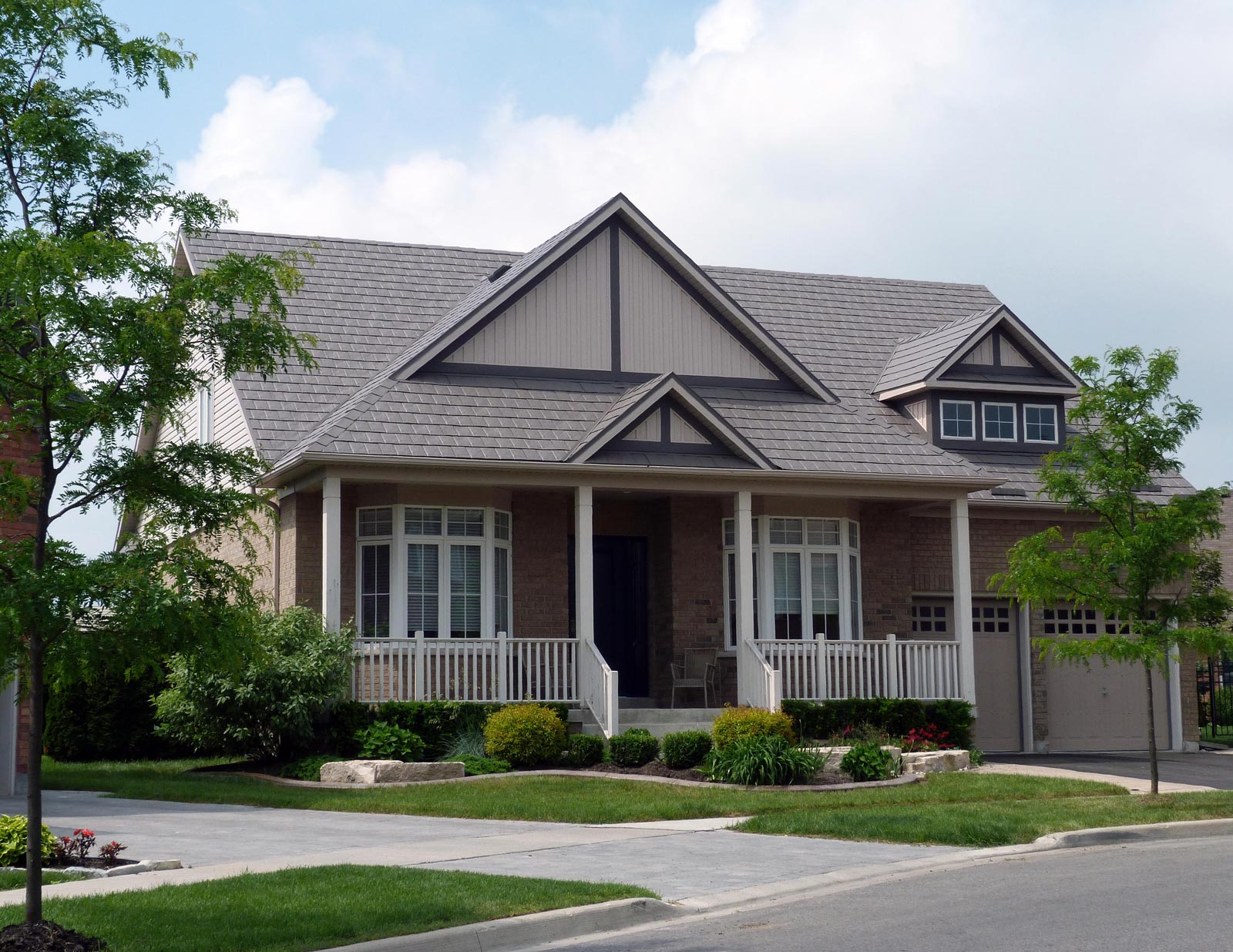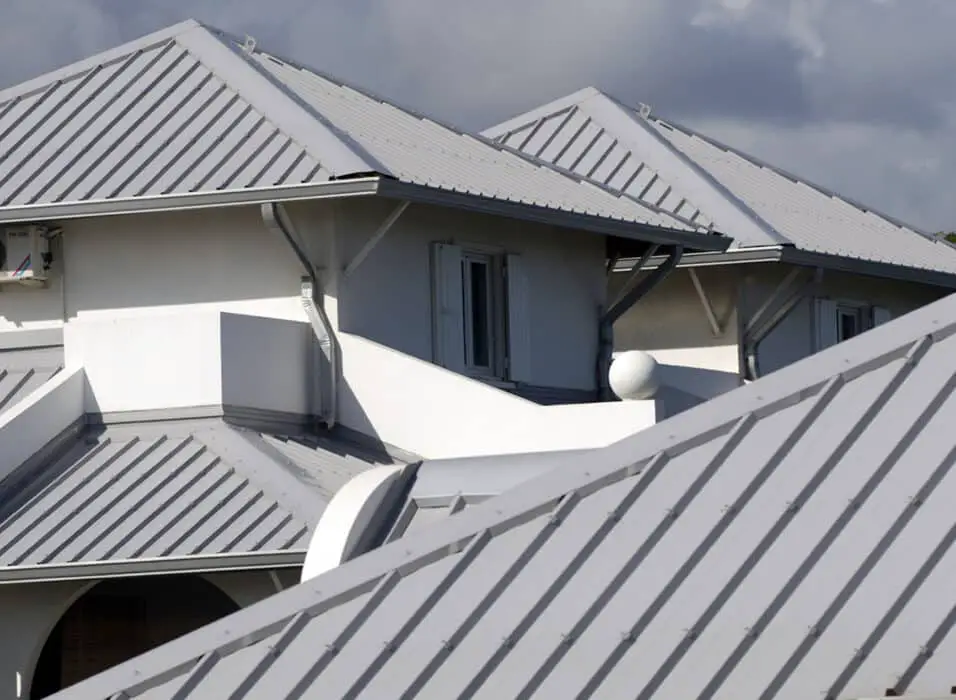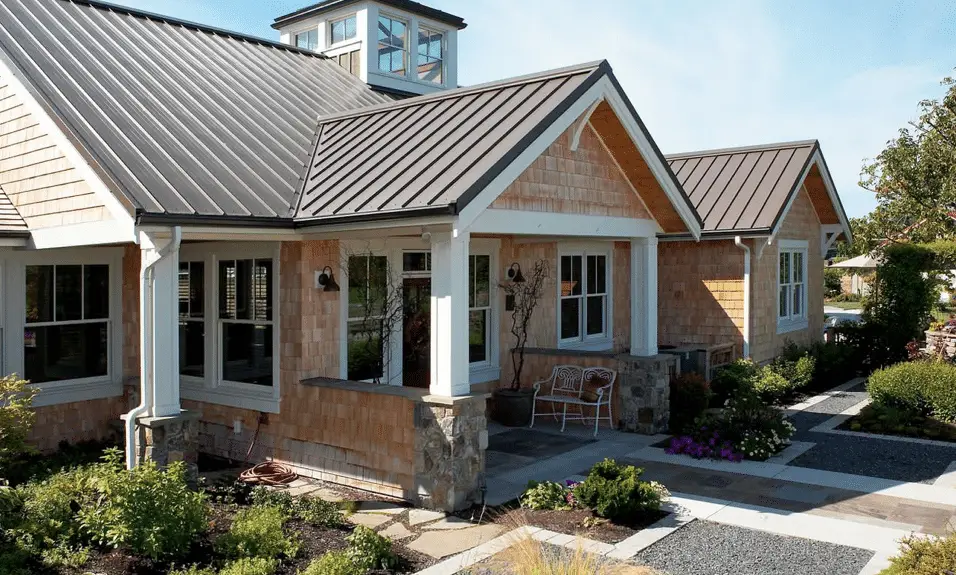Are Metal Roofs Cheaper Than Shingles
Introduction
Are Metal Roofs Cheaper Than Shingles: When it comes to choosing the right roofing material for your home, cost is often a significant factor to consider. Among the various options available, metal roofs and shingles are two popular choices that homeowners often contemplate. The question that arises is whether metal roofs are cheaper than shingles. In this article, we will delve into the cost comparison between these two roofing materials, exploring the factors that influence their prices and helping you make an informed decision for your roofing needs.
Before delving into the cost comparison, it is essential to understand the characteristics of metal roofs and shingles. Metal roofs are made of durable materials such as steel, aluminum, or copper, offering exceptional longevity and resistance to harsh weather conditions. On the other hand, shingles are typically made of asphalt or fiberglass and are available in various styles and colors, providing a traditional and aesthetically pleasing look to homes. Both options have their unique advantages and disadvantages, but cost plays a crucial role in the decision-making process.
When it comes to upfront costs, shingles tend to be more affordable than metal roofs. The price of shingles can vary depending on the quality and brand, but they generally fall within a lower price range. Metal roofs, on the other hand, are often considered a long-term investment due to their higher initial cost. However, it is important to note that while shingles may have a lower upfront cost, they may require more frequent repairs and replacements over time, which can add up in terms of long-term expenses.
Another factor to consider when comparing the cost of metal roofs and shingles is their lifespan. Metal roofs are known for their exceptional durability and longevity, often lasting two to three times longer than shingles. This extended lifespan can result in significant savings in the long run, as homeowners with metal roofs may not need to replace their roofs as frequently as those with shingles. Additionally, metal roofs require less maintenance, further reducing long-term costs.
However, it is important to consider other cost factors beyond the initial installation and lifespan. Factors such as energy efficiency, insurance premiums, and environmental impact can also influence the overall cost of a roofing material. Metal roofs are known for their energy efficiency, as they reflect sunlight and reduce cooling costs during hot summers. Moreover, some insurance companies offer discounts for homes with metal roofs due to their fire resistance and durability. Considering these factors alongside the upfront and long-term costs can help homeowners make a well-rounded decision.
While shingles may have a lower upfront cost, metal roofs offer long-term savings due to their durability and extended lifespan. However, it is crucial to consider various factors such as energy efficiency, insurance premiums, and environmental impact when comparing the overall cost of these roofing materials. By weighing these factors and understanding your specific needs and budget, you can make an informed decision on whether metal roofs or shingles are the more cost-effective option for your home.
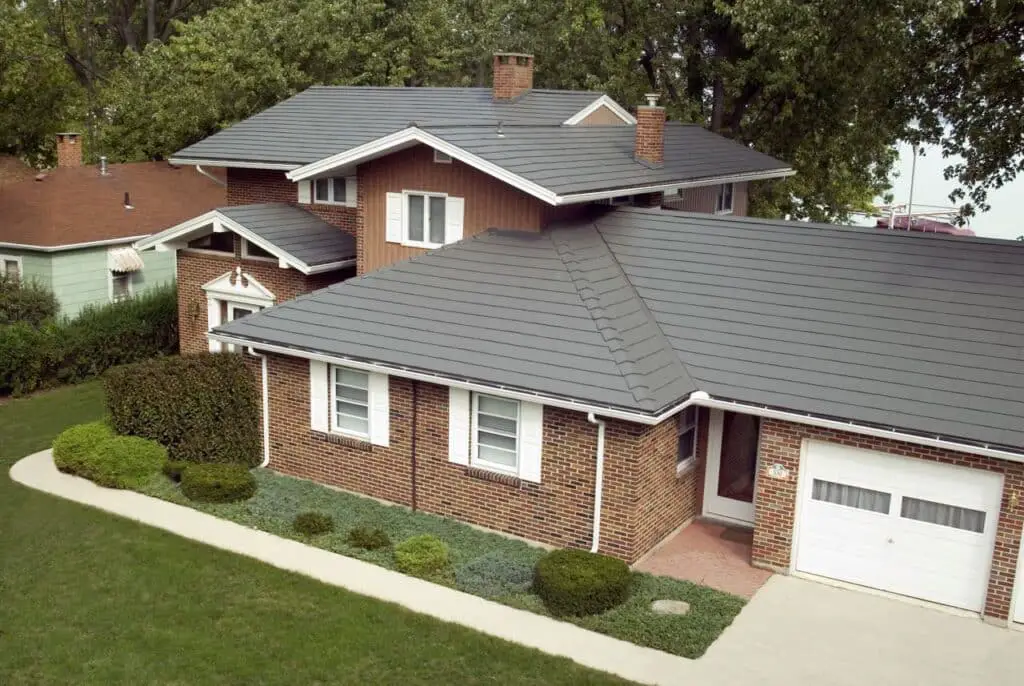
Are shingles or metal roof cheaper?
No matter which you choose, it’s not going to be cheap. With that in mind, a metal roof will always be more expensive than shingles. Not only do the metal panels themselves cost more than asphalt shingles, but a metal roof also requires more skill and labor to install.
Introduction:
When it comes to choosing the right roofing material for your home, cost is often a significant factor to consider. Shingles and metal roofs are two popular options, each with its own advantages and disadvantages. In this article, we will compare the cost of shingles and metal roofs to help you make an informed decision.
Shingles:
Shingles are the most common roofing material used in residential properties. They are made from various materials such as asphalt, wood, or slate. One of the main reasons why shingles are popular is their affordability. Compared to metal roofs, shingles are generally cheaper to install. The cost of shingles can vary depending on the material used, but they are generally more budget-friendly.
Another advantage of shingles is their ease of installation. They can be installed quickly and easily by a professional roofer, which can help reduce labor costs. Additionally, shingles are readily available in most home improvement stores, making them a convenient option for homeowners.
Metal Roofs:
Metal roofs, on the other hand, are known for their durability and longevity. While they may have a higher upfront cost compared to shingles, they can last significantly longer. Metal roofs can withstand harsh weather conditions, including strong winds, heavy rain, and even hail. This durability can save you money in the long run, as you won’t have to replace your roof as frequently.
Furthermore, metal roofs are energy-efficient. They reflect sunlight, reducing the amount of heat absorbed by your home. This can help lower your cooling costs during hot summer months. Additionally, metal roofs are often made from recycled materials, making them an environmentally friendly choice.
Both shingles and metal roofs have their own advantages and disadvantages when it comes to cost. Shingles are generally more affordable upfront and easier to install, while metal roofs offer long-term durability and energy efficiency. Ultimately, the choice between the two will depend on your budget, preferences, and the specific needs of your home. It is recommended to consult with a professional roofer to assess your options and make an informed decision.
Which is better a metal or a shingle roof?
Metal roofs tend to be more durable.
Metal roofs can stand up to nearly anything Mother Nature throws at them, so you’ll find that they come with 30- to 50-year warranties, and often outlast that with lifespans of 40 to 70 years.
Introduction:
When it comes to choosing a roof for your home, one of the most important decisions you’ll have to make is whether to go with a metal or a shingle roof. Both options have their own set of advantages and disadvantages, and the choice ultimately depends on your specific needs and preferences. In this article, we will explore the key factors to consider when deciding between a metal or a shingle roof, helping you make an informed decision for your home.
Benefits of Metal Roof:
One of the main advantages of a metal roof is its durability. Metal roofs are known for their longevity and can often last two to three times longer than shingle roofs. This means that once you install a metal roof, you can enjoy its benefits for several decades without worrying about frequent repairs or replacements. Additionally, metal roofs are highly resistant to extreme weather conditions, such as heavy rain, strong winds, and hail, making them an excellent choice for homeowners living in areas prone to severe weather.
Another benefit of metal roofs is their energy efficiency. Metal reflects sunlight, reducing the amount of heat absorbed by your home. This can result in lower cooling costs during hot summer months, making metal roofs an environmentally friendly option. Additionally, metal roofs are often made from recycled materials and can be recycled again at the end of their lifespan, further reducing their environmental impact.
Advantages of Shingle Roof:
While metal roofs have their advantages, shingle roofs also offer several benefits that make them a popular choice among homeowners. One of the main advantages of shingle roofs is their affordability. Shingle roofs are generally less expensive to install compared to metal roofs, making them a more budget-friendly option for those on a tight budget.
In addition to affordability, shingle roofs come in a wide variety of styles, colors, and designs, allowing homeowners to choose a roof that matches their aesthetic preferences. Whether you prefer a traditional look or a more modern appearance, shingle roofs offer versatility in terms of design options. Furthermore, shingle roofs are relatively easy to repair and maintain, with individual shingles being replaceable if damaged.
The choice between a metal or a shingle roof depends on various factors such as durability, energy efficiency, budget, and aesthetic preferences. While metal roofs offer longevity and energy efficiency, shingle roofs are more affordable and provide a wide range of design options. Consider your specific needs and consult with roofing professionals to determine which option is best suited for your home.
What type of roofing is cheapest?
Asphalt is the cheapest of all roofing materials in the market and will last you between 15 to 30 years. This is the best option for homeowners facing budgetary constraints. It is also widely available and comes in a variety of colors.
Introduction:
When it comes to roofing, cost is often a significant factor to consider. Homeowners and builders alike are constantly seeking the most affordable roofing options without compromising on quality and durability. In this article, we will explore the different types of roofing materials available and identify the cheapest option among them.
Types of Roofing Materials:
There are several roofing materials to choose from, each with its own advantages and disadvantages. Asphalt shingles, metal roofing, clay tiles, and wood shingles are some of the most commonly used options. Asphalt shingles are the most popular choice due to their affordability and ease of installation. They are available in various colors and styles, making them suitable for a wide range of architectural designs.
The Cheapest Roofing Option:
Among the various roofing materials, asphalt shingles are generally considered the cheapest option. They offer a cost-effective solution without compromising on quality. Asphalt shingles are durable, weather-resistant, and require minimal maintenance. Additionally, their installation is relatively simple, which further reduces labor costs. These factors contribute to their affordability and make them a popular choice for budget-conscious homeowners.
Considerations:
While asphalt shingles may be the cheapest roofing option, it is essential to consider other factors before making a final decision. Factors such as climate, durability, and aesthetic appeal should also be taken into account. For instance, metal roofing may have a higher upfront cost but can provide long-term savings due to its durability and energy efficiency. Similarly, clay tiles offer a unique and aesthetically pleasing appearance but may be more expensive than asphalt shingles.
When it comes to affordability, asphalt shingles are generally the cheapest roofing option available. However, it is crucial to consider other factors such as climate, durability, and aesthetic appeal before making a final decision. Consulting with roofing professionals and considering long-term costs can help homeowners and builders make an informed choice that meets their budget and requirements.
Are metal roofs loud when raining?
This is one of the most frequently asked questions we hear from homeowners interested in metal roofing, so we’ll get right to the point–no, metal roofs are not loud in the rain.
Introduction:
Metal roofs have gained popularity in recent years due to their durability, longevity, and energy efficiency. However, one common concern that homeowners often have is whether metal roofs are loud when it rains. This question arises from the perception that raindrops hitting a metal surface would create a noisy environment inside the house. In this article, we will explore the factors that contribute to the noise level of metal roofs during rainfall and provide a comprehensive answer to this frequently asked question.
Factors affecting the noise level:
Several factors influence the noise level of a metal roof when it rains. The first factor is the type of metal used. Different metals have varying thicknesses and properties, which can affect the sound transmission. Thicker metals tend to absorb more sound, resulting in reduced noise levels. Additionally, the roof’s construction and insulation play a crucial role in minimizing noise. Proper insulation can significantly dampen the sound of raindrops hitting the metal surface, making it less audible inside the house.
Impact of roof design:
The design of the roof also affects the noise level during rainfall. Metal roofs with a steep slope tend to be quieter compared to those with a flatter slope. This is because raindrops slide off more quickly on steeper roofs, reducing the time they spend hitting the surface. Additionally, the presence of an attic or a ceiling space between the metal roof and the interior of the house can act as a sound barrier, further reducing the noise level.
Weather conditions:
Another important factor to consider is the intensity of the rainfall. Light rain may produce minimal noise, while heavy downpours can result in louder sounds. However, it is essential to note that the noise level is subjective and can vary from person to person. Some individuals may find the sound of rain on a metal roof soothing, while others may perceive it as loud and disruptive.
Mitigating noise:
If you are concerned about the potential noise level of a metal roof during rainfall, there are several measures you can take to mitigate it. As mentioned earlier, proper insulation is crucial in reducing noise transmission. Additionally, installing a sound-deadening underlayment between the metal roof and the roof deck can further dampen the sound. Regular maintenance of the roof, such as ensuring tight fastenings and addressing any loose components, can also help minimize noise.
While metal roofs may produce some noise when it rains, the actual level of noise depends on various factors such as the type of metal, roof design, insulation, and weather conditions. With proper construction, insulation, and maintenance, the noise level can be significantly reduced, providing homeowners with a comfortable and peaceful living environment even during heavy rainfall.
What lasts longer shingles or metal?
Metal Roofs Are More Durable than Shingles
However, they do last for a minimum range of 40-70 years. While extreme hailing, snow, branches etc can dent these roofs, there are some sturdier options like steel roofs that you could choose from. You must also ensure that your roof is manufactured by a known manufacturer.
Introduction:
When it comes to choosing the right material for roofing, durability is a crucial factor to consider. The longevity of a roof is directly related to its ability to withstand the elements and maintain its structural integrity over time. Two popular options that homeowners often contemplate are shingles and metal roofs. Both materials have their own set of advantages and disadvantages, but when it comes to longevity, one material tends to outshine the other.
Shingles:
Shingles are a common roofing material that has been used for decades. They are typically made from asphalt, fiberglass, or wood, and are available in various styles and colors. Shingles are known for their affordability and ease of installation, making them a popular choice among homeowners. However, when it comes to longevity, shingles generally have a shorter lifespan compared to metal roofs.
Shingles typically last between 15 to 30 years, depending on the quality of the material and the climate conditions they are exposed to. Harsh weather conditions, such as heavy rain, strong winds, and extreme temperatures, can significantly impact the lifespan of shingles. Over time, shingles may become brittle, crack, or curl, leading to leaks and potential water damage to the underlying structure of the roof. Regular maintenance and timely repairs can help prolong the lifespan of shingles, but they will eventually need to be replaced.
Metal Roofs:
On the other hand, metal roofs are renowned for their exceptional durability and longevity. They are typically made from materials such as steel, aluminum, or copper, which offer superior resistance to weathering and corrosion. Metal roofs can withstand extreme weather conditions, including heavy rain, snow, hail, and high winds, without sustaining significant damage.
Metal roofs have an average lifespan of 40 to 70 years, nearly double that of shingles. Some metal roofs can even last up to a century with proper maintenance. The longevity of metal roofs can be attributed to their ability to resist cracking, warping, and fading, which are common issues with shingles. Additionally, metal roofs are fire-resistant, making them a safer option for homeowners.
While shingles are a popular and affordable roofing option, metal roofs surpass them in terms of longevity. Metal roofs offer superior durability, with an average lifespan of 40 to 70 years, compared to the 15 to 30 years of shingles. Investing in a metal roof can provide homeowners with long-term peace of mind, knowing that their roof will withstand the test of time and the elements. However, it is important to consider other factors such as cost, aesthetics, and climate suitability before making a final decision on the roofing material.
When comparing the cost differences between metal roofs and shingles, it is important to consider both the initial installation expenses and the long-term affordability. Metal roofs generally have a higher upfront cost compared to shingles. This is primarily due to the higher cost of materials and the specialized installation techniques required for metal roofs. However, it is crucial to note that metal roofs offer significant long-term cost savings.
One of the key advantages of metal roofs is their durability and longevity. While shingles may need to be replaced every 15-20 years, metal roofs can last 50 years or more with proper maintenance. This means that homeowners who choose metal roofs can avoid the frequent replacement costs associated with shingles. Additionally, metal roofs are highly resistant to damage from elements such as fire, wind, and hail, reducing the need for repairs and further saving on maintenance expenses.
Are metal roofs more affordable in the long run compared to shingles?
When considering the long-term affordability of metal roofs compared to shingles, it is important to take into account several factors. While the upfront cost of metal roofs is generally higher than that of shingles, their durability and longevity make them a cost-effective choice in the long run. Metal roofs have an average lifespan of 40 to 70 years, whereas shingles typically last around 20 to 30 years. This means that homeowners with metal roofs may not need to replace their roof as frequently as those with shingles, resulting in significant savings over time.
Additionally, metal roofs offer energy efficiency benefits that can contribute to long-term cost savings. Metal reflects sunlight, reducing the amount of heat absorbed by the roof and subsequently lowering cooling costs during hot summer months. This can lead to substantial savings on energy bills over the years. Moreover, metal roofs are highly resistant to damage from elements such as wind, hail, and fire, which can result in lower repair and maintenance costs compared to shingles.
How do the installation expenses of metal roofs compare to shingles?
When comparing the installation expenses of metal roofs to shingles, it is important to consider several factors. Firstly, metal roofs generally have a higher upfront cost compared to shingles. This is primarily due to the higher cost of materials and the specialized skills required for installation. Metal roofs often require professional installation, which can add to the overall expenses.
However, it is essential to note that while the initial installation cost of metal roofs may be higher, they tend to have a longer lifespan compared to shingles. Metal roofs can last up to 50 years or more, whereas shingles typically have a lifespan of around 20-30 years. This means that homeowners may need to replace shingles multiple times over the lifespan of a metal roof, resulting in additional installation expenses.
Are there any additional maintenance costs associated with metal roofs compared to shingles?
When comparing metal roofs to shingles, it is important to consider the additional maintenance costs that may be associated with metal roofs. While metal roofs are generally known for their durability and longevity, they do require some maintenance to ensure their optimal performance and longevity.
One of the main maintenance costs associated with metal roofs is the need for periodic inspections and repairs. Metal roofs can be susceptible to damage from extreme weather conditions, such as hail or strong winds. It is important to regularly inspect the roof for any signs of damage, such as dents or loose panels, and address them promptly to prevent further issues.
Another maintenance cost to consider is the need for occasional re-painting or re-coating of the metal roof. Over time, the paint or coating on the metal roof may fade or deteriorate due to exposure to the elements. This can result in a less aesthetically pleasing appearance and potentially compromise the protective properties of the roof. Therefore, periodic re-painting or re-coating may be necessary to maintain the roof’s appearance and performance.
What factors should be considered when determining the overall cost-effectiveness of metal roofs versus shingles?
When evaluating the overall cost-effectiveness of metal roofs versus shingles, several factors need to be taken into consideration. Firstly, the lifespan of the roofing materials plays a crucial role. Metal roofs typically have a significantly longer lifespan compared to shingles, lasting up to 50 years or more, while shingles usually last around 20 to 30 years. This extended lifespan of metal roofs translates into long-term cost savings as homeowners won’t need to replace their roofs as frequently.
Another important factor to consider is the energy efficiency of the roofing materials. Metal roofs are known for their excellent energy efficiency, as they reflect sunlight and heat, reducing the need for air conditioning during hot summer months. This can lead to substantial savings on energy bills over time. On the other hand, shingles tend to absorb heat, which can increase cooling costs in warmer climates.
Additionally, the maintenance requirements of each roofing option should be taken into account. Metal roofs generally require minimal maintenance, with occasional inspections and cleanings being sufficient. Shingles, on the other hand, may require more frequent repairs and replacements due to their susceptibility to damage from weather conditions such as wind, hail, and UV rays. These additional maintenance costs associated with shingles can add up over time, making metal roofs a more cost-effective choice in the long run.
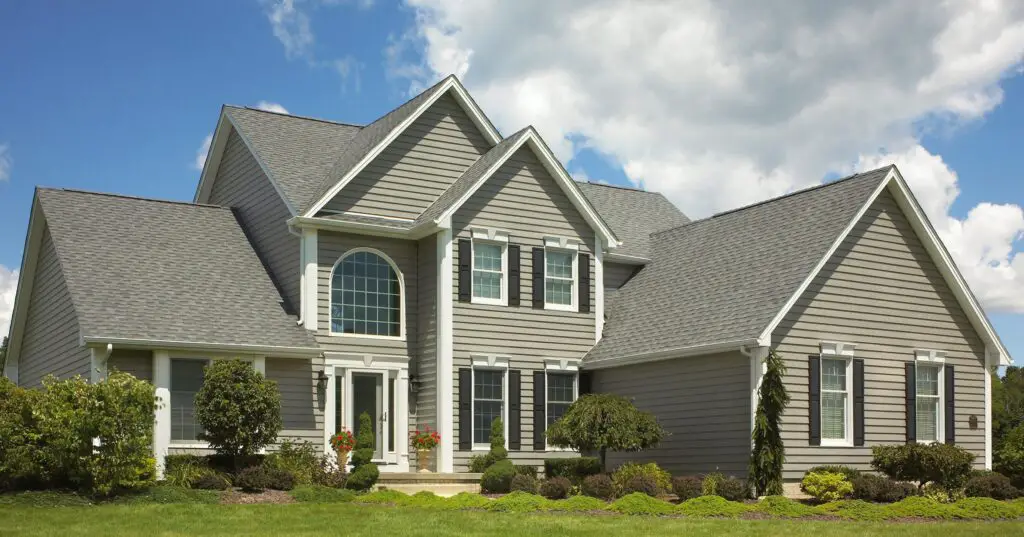
Conclusion
After analyzing the array “”are metal roofs cheaper than shingles,”” it can be concluded that metal roofs are indeed a more cost-effective option compared to shingles. This conclusion is based on several factors, including the initial cost, long-term savings, and durability of metal roofs.
Firstly, when considering the initial cost, metal roofs may appear to be more expensive than shingles. However, it is essential to look beyond the upfront expenses and consider the long-term savings. Metal roofs have a significantly longer lifespan compared to shingles, which typically need to be replaced every 15-20 years. This means that while the initial investment may be higher, homeowners will save money in the long run by avoiding frequent replacement costs.
Additionally, metal roofs offer energy efficiency benefits that can lead to substantial savings on utility bills. Metal reflects heat from the sun, reducing the need for air conditioning during hot summer months. This can result in lower energy consumption and lower cooling costs. Furthermore, metal roofs are excellent at insulating homes, helping to maintain a comfortable indoor temperature year-round. By reducing the reliance on heating and cooling systems, homeowners can save even more money on energy expenses.
Moreover, the durability of metal roofs is another significant advantage. Metal is highly resistant to extreme weather conditions, such as hail, heavy rain, and strong winds. Unlike shingles, which can easily get damaged or blown off during storms, metal roofs provide superior protection and require minimal maintenance. This durability translates into long-term savings as homeowners do not have to spend money on frequent repairs or replacements.
The array “”are metal roofs cheaper than shingles”” clearly indicates that metal roofs are a more cost-effective option. Despite the higher initial cost, metal roofs offer long-term savings through their extended lifespan, energy efficiency benefits, and durability. Homeowners who choose metal roofs can enjoy reduced replacement and maintenance expenses, as well as lower energy bills. Therefore, when considering the financial aspect, it is evident that metal roofs provide a more economical choice compared to shingles.



